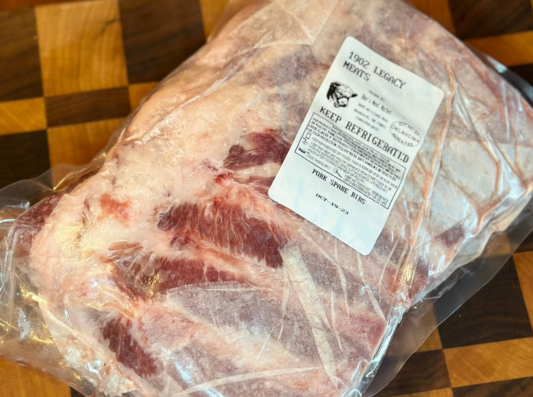Discover the Benefits of Rotational Grazing
posted on
March 29, 2023
Rotational Grazing
Rotational grazing is a ranching method where cattle are moved between different areas of the pasture so that they have access to fresh grass while allowing previously grazed areas time to recover. Rotational grazing has several benefits for the environment and cattle health.
Benefits for the Environment
Reduced soil erosion: Rotational grazing promotes healthy soil by reducing erosion, which prevents sediment from washing away.
Increased biodiversity: By rotating cattle between different pastures, we can increase plant diversity in our pastures. This improves soil health and attracts a wider variety of wildlife. The picture above shows our pasture on the left that has been grazed on a rotation compared to the pasture on the right, which has not. The plant diversity is much higher after implementing rotational grazing.
Manage Drought: We are prone to drought conditions here in Northwest Oklahoma. By building healthier soils, we can manage our pastures during a drought. When utilizing rotational grazing, the cattle leave the grass to recover, creating a nice insulation for the soil. Because of the grass insulation, the soil can stay at a normal temperature so it doesn’t peak in the heat and drop in the cold, allowing the grass to continue to grow. This extends our growing season so we can feed without supplements longer during those peak temperature seasons.
Benefits for Cattle Health
Lower risk of parasite transmission: Rotational grazing lowers the parasite exposure to the animal by breaking the life cycle of the parasite.
Access to a wider range of nutrients: Rotational grazing enables grass-fed cattle to consume a variety of nutrients from natural forage, which contributes to their overall health and well-being. This reduces the need for antibiotics and promotes a more natural diet, which is beneficial for the animals.
Stay Informed
Thanks for taking the time to learn about grass-fed beef and rotational grazing! I hope this info helps you to make informed decisions about what you choose to put on your plate.
We strive to be transparent with our ranching practices so you always know how your animal is raised! You can find more information on how we raise our animals and manage our land on this page. If you have any questions about our practices, please reach out or leave a comment below!



